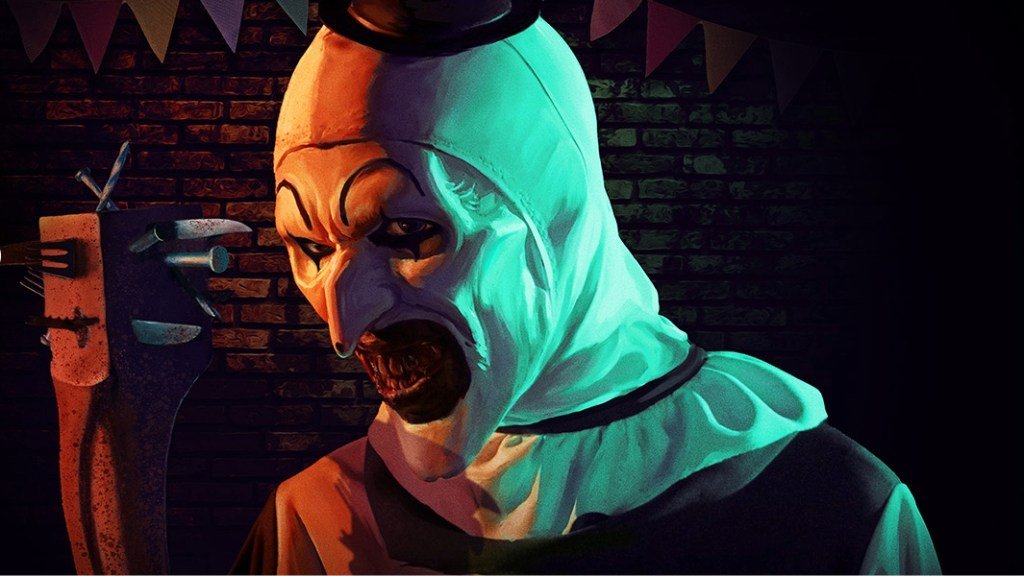The Dark Allure of Horror: Terrifier Returns to Halloween Horror Nights
The shriek of terror-inducing laughter from Art the Clown reverberates through the crisp autumn air as Universal Studios Hollywood prepares for its highly anticipated Halloween Horror Nights. This year, the malevolent figure from the “Terrifier” film franchise takes center stage, embodying a disturbing blend of fear and fascination that gripped audiences since the franchise’s inception. The chilling image of a demonic clown stalking helpless victims resonates in the dark corners of our collective psyche, serving as a reflection of societal fears, horror storytelling, and, undeniably, the allure of the grotesque.
The Cultural Phenomenon of Evil Clowns
Art the Clown, characterized by his sinister smile and grotesque antics, embodies the archetype of the evil clown—an unsettling figure deeply rooted in psychological horror. Dr. Clara Humbert, a cultural anthropologist specializing in horror cinema, noted, “Clowns traditionally symbolize joy but, when corrupted, they reveal the darkest facets of humanity. Art the Clown taps into that fear, amplifying it through exaggerated gore and sadistic humor.” This paradox of transformation is precisely what draws audiences year after year to Universal’s Halloween Horror Nights, transforming a typically joyous season into a nightmare realm.
The Terrifier Universe and Its Shock Value
The “Terrifier” series has gained notoriety for its unapologetically extreme gore and hysterical violence, with the upcoming “Terrifier 4” promising to delve deeper into Art the Clown’s background. As Damien Leone returns as director and writer, fans eagerly expect the exploration of this villain’s twisted psyche. “The intensity of the kills is not just for shock value but serves to challenge audience perceptions of horror,” states Dr. Ethan Marshall, a film studies researcher. “Horror is no longer about what scares us; it’s about what fascinates us.”
Experience the Horror: What Awaits Visitors
Expectations run high as visitors brave the newly themed “Funhouse of Horror,” where top scenes from “Terrifier 2” are recreated in a disorienting labyrinth filled with gruesome displays. Iconic kills are showcased within the Clown Cafe, where patrons might find themselves unwittingly immersed in Art’s twisted world. Expect appearances from fragmented realities—a distracted protagonist, ominous figures like Little Pale Girl, and other characters that audiences have come to fear.
- Vicky Heyes: The unfortunate heroine who repeatedly confronts Art in her desperate attempts to survive.
- Little Pale Girl: A ghostly figure who is both iconic and unsettling, often serving as a harbinger of doom.
- Clown Cafe: A thematic dining experience that immerses visitors in a somber atmosphere of dread.
The Economic Impact of Horror Events
Horror has blossomed into a billion-dollar industry, with Halloween Horror Nights leading the charge. The event runs select nights from September 4 through November 2, attracting thrill-seekers from all over the globe. According to studies conducted by the “Institute for Thematic Entertainment,” horror events like this generate approximately $700 million annually. “These experiences are not just entertainment; they create communities of enthusiasts,” says Dr. Emily Reed, an economist focused on entertainment revenue streams. “They thrive on social interaction, shared fear, and the unique thrill of adrenaline-fueled excitement.”
Ticketing and Visitor Guidelines
As the event draws nearer, ticket sales have kicked into high gear, with single-night passes ranging from $77 to $107 for general admission. Horror Nights Fear passes allow for multiple returns, priced between $199 and $299. Special ticketing options, including Universal Express line-cutting perks and VIP tours, cater to those seeking enhanced experiences, underscoring the lucrative nature of such frightful spectacles.
The Visitor Experience: A Blend of Fear and Fun
The experience at Halloween Horror Nights is multifaceted; it’s not just about scaring attendees but also about providing them with a fun, albeit dark, social experience. “Our research suggests that the emotional catharsis attendees feel contributes to a more profound understanding of their fears,” says Dr. Liu Zhang, a psychologist who studies the social implications of horror events. “By confronting what terrifies them in a controlled environment, audiences find empowerment in their vulnerabilities.”
As enthusiasm builds, the sinister laughter of Art the Clown serves as a reminder that horror can be a mirror reflecting our societal anxieties, a way to confront trauma, or simply a thrilling escape from reality. In embracing these dark narratives, Universal Studios Hollywood continues to carve a niche in the cultural landscape, drawing fans into the unsettling embrace of its thrilling underworld. Whether viewed as a pastime or a psychological experiment, Halloween Horror Nights stands as a testament to our enduring fascination with fear—one scream at a time.









